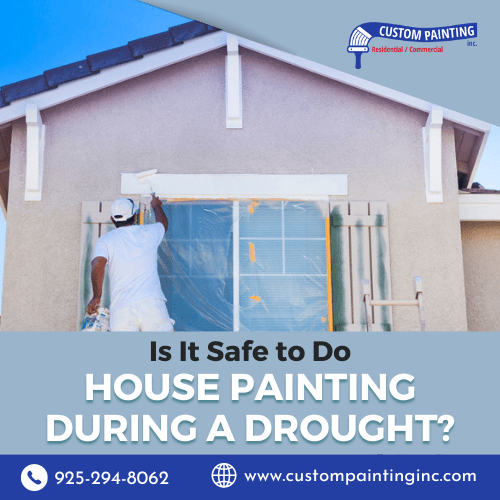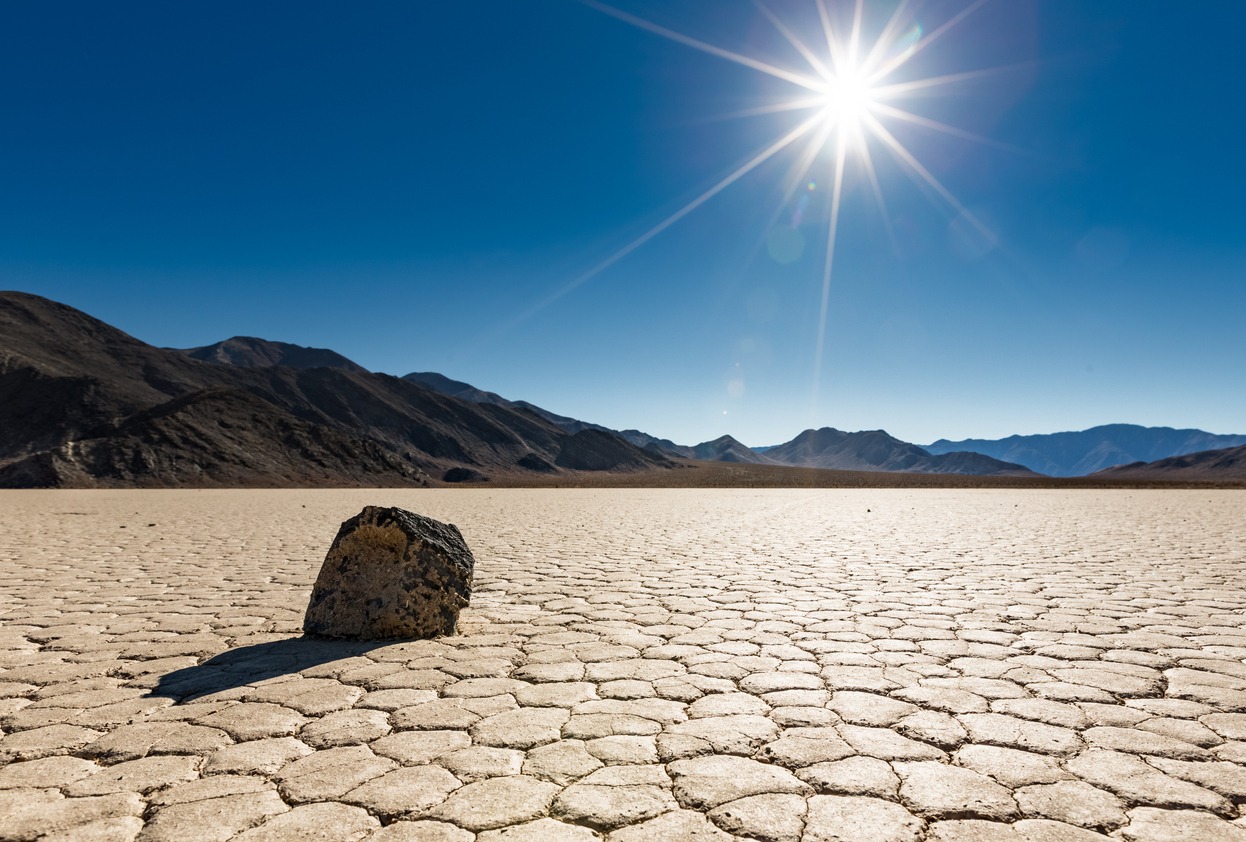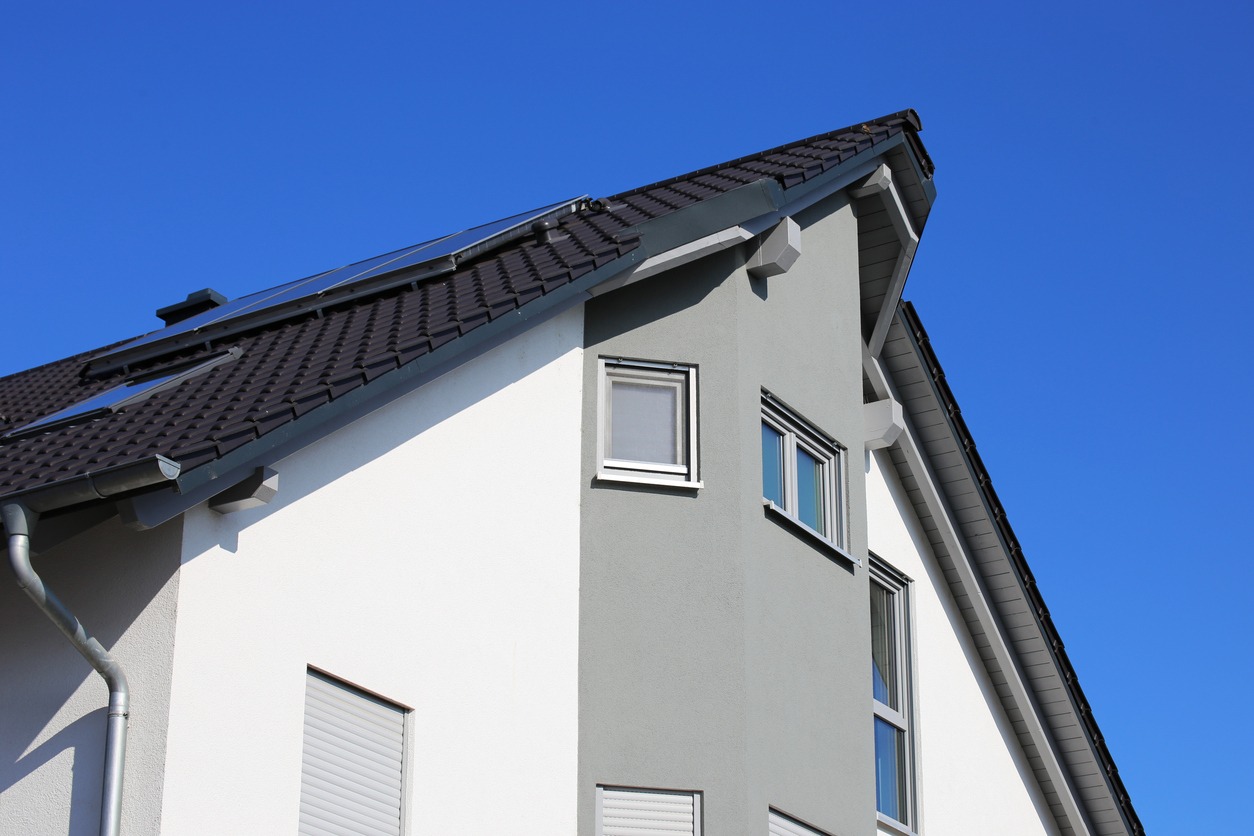The state of California is notorious for periodic droughts throughout recent recorded history. Drought’s most obvious effects are adverse impacts on water supply, dried-out lands, and wildfires. California, unfortunately, has been periodically hit with wildfires with varying degrees of severity – many of these wildfires are even the deadliest in the country. So, you could say that drought significantly affects many aspects of Californians’ daily lives.
However, you may not realize that drought can also have devastating effects on your home. Arid weather can cause damage to your home’s structure, foundation, and paint finish. Being aware of drought’s effects on your home can help you keep an eye out for paint issues and perform fixes sooner rather than later.
Can Drought Also Affect Paint Application?
Yes – drought can also affect paint application. If you believe arid air means faster paint drying, that might be true. However, temperatures above 85 degrees °F (29 degrees °C) can also wreak havoc on your paint job.
When you apply paint under scorching conditions, the moisture evaporates and escapes from the paint too quickly. The paint dries faster than it should, resulting in serious surface issues like cracking, blistering, and bubbling paint.
That’s why it’s best to be cautious, especially during exterior house painting during drought. Avoid painting in the hottest hours of the day or under direct sunlight to ensure the proper paint application and adhesion.
How Can Drought Affect House Painting Application and Quality?
Drought conditions can significantly impact both the application and quality of house paint. Here are several ways in which drought can affect this process:
Humidity levels
- Low humidity – Drought typically brings low humidity levels, which can cause paint to dry too quickly. Rapid drying can prevent the paint from properly leveling and adhering, leading to an uneven finish and potential peeling.
- High humidity – In some regions, drought can also coincide with high temperatures that cause water sources to evaporate, increasing local dampness. High humidity can prolong drying times, resulting in a sticky finish or mold growth.
Surface preparation
- Dry surfaces – The surfaces you’ll paint may be dry, hot to the touch, and porous due to prolonged drought, absorbing more paint than usual. It can require additional coats for proper coverage and affect the paint’s durability.
- Dust and debris – Drought conditions often lead to increased dust and debris. Proper cleaning of the surfaces before painting becomes crucial to avoid imperfections.
Temperature extremes
- High temperatures – Drought is often accompanied by high temperatures, which can cause paint to blister or crack if applied under direct sunlight. High temperatures can also make the painting process more challenging and uncomfortable for workers.
- Heat stress on paint – Some types of paint may not perform well under extreme heat, leading to issues such as increased viscosity, poor adhesion, or uneven application.
Water restrictions
- Limited cleaning – Water restrictions common in drought areas can make cleaning surfaces challenging before painting. Dirty surfaces can prevent proper paint adhesion and lead to premature paint failure.
- Thinning and cleanup – If water-based paints are restricted, there may be challenges in thinning the paint and cleaning tools and equipment.
Substrate conditions
- Cracked substrates – Drought can cause wood and other substrates to dry out and crack. These cracks must be filled and sanded before painting, adding additional steps to the preparation process.
- Movement and expansion – Wood and other materials might expand and contract more than usual due to fluctuating moisture levels during and after drought, leading to paint cracking or peeling over time.
What are the Best Practices for Painting During Droughts?
- Timing – Paint during the cooler hours of the day, such as early morning or late afternoon, to avoid extreme heat.
- Surface preparation – Ensure surfaces are thoroughly cleaned and primed, particularly if dusty or cracked.
- Paint selection – Use high-quality paints formulated to withstand extreme conditions. Consider paints with UV resistance and flexible properties to accommodate substrate movement.
- Moisture control – Keep the substrate slightly moist before painting to prevent rapid drying of the paint. You can address this issue by lightly misting the surface with water.
- Multiple thin coats: Apply multiple thin coats rather than one thick coat to ensure even drying and better coverage.
- Hydration: Stay hydrated and take regular breaks if you do the painting yourself, as working in high temperatures can be physically demanding.
- Protective measures – Use tarps or shades to protect freshly applied paint from direct sunlight and wind, which can speed up drying and cause defects.
These factors and suggestions can help you ensure the paint application is successful and durable, even under drought conditions.
The Best Exterior Paints to Use During Drought
When painting the exterior of a building during a drought, choose paints that are not only durable and high-quality but also environmentally friendly and efficient in terms of water use. Here are some of the best types of paints to consider:
1. Acrylic paints
- Water-based: Acrylic paints are water-based, making them a good choice for drought conditions as they have lower volatile organic compound (VOC) emissions than oil-based paints.
- Durable: They can resist various weather conditions, including UV radiation, which is especially beneficial in dry and sunny climates.
- Quick drying: Acrylic paints dry quickly, making them suitable in hot weather conditions.
2. Elastomeric paints
- Flexible: These paints can stretch and contract with temperature changes, preventing cracks and providing a longer-lasting finish.
- Waterproofing: They offer excellent waterproofing properties, which can protect the exterior surfaces during unexpected rains.
- Breathable: Despite being waterproof, they allow moisture from inside the walls to escape, preventing mold and mildew growth.
3. Low-VOC or zero-VOC paints
- Environmentally friendly: These paints emit fewer harmful chemicals, and thus are better for the environment and air quality, which is particularly important during a drought.
- Healthier option: Reduced VOC emissions also mean fewer health risks for those applying the paint and those living in the painted buildings.
4. Reflective or cool roof paints
- Energy efficiency: These paints reflect more sunlight and absorb less heat, keeping buildings cooler and reducing the need for air conditioning.
- Special coatings: Some are formulated specifically for roofs, which can significantly lower roof temperatures and help conserve energy.
5. Silicone-based paints
- Heat resistance: Silicone-based paints can withstand high temperatures, making them suitable for areas with intense sun exposure.
- Longevity: They offer good durability and can resist weathering and UV radiation.
Final Words
It’s generally not recommended to do exterior painting during a drought. Aside from the likelihood of cracking and blistering paint, it is unsafe to paint outside in extreme weather conditions. Overexposure to the sun and heat can increase your risk of heatstroke and skin cancer, among other adverse health effects.
But if you must go and paint outside, do this during the more comfortable parts of the day (early to late morning or late afternoon). It helps ensure the most decent paint finish possible.
For more questions and concerns regarding painting during a drought or other extreme weather conditions, let Custom Painting, Inc. know! Call us at 925-294-8062 or message us on our contact form. We will be happy to be of assistance.



